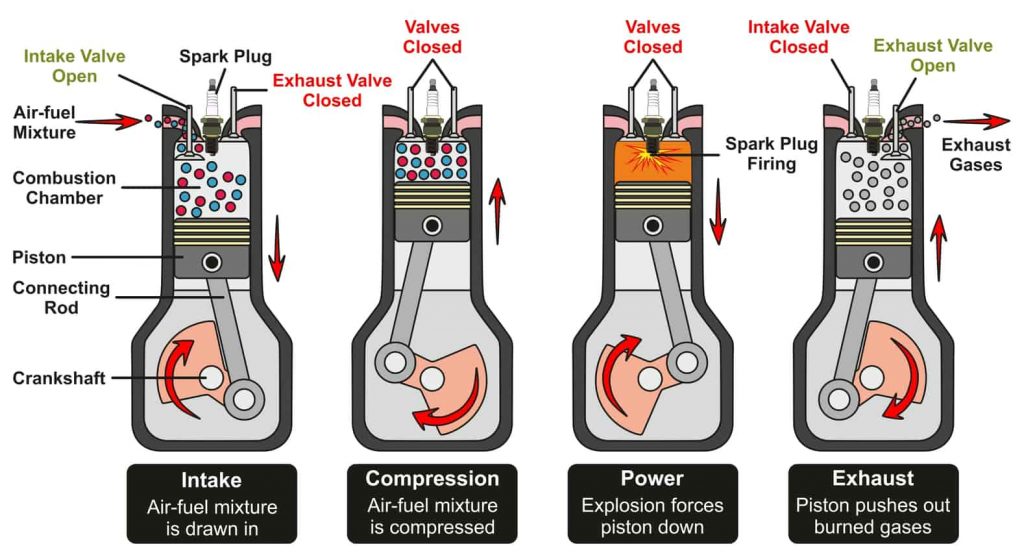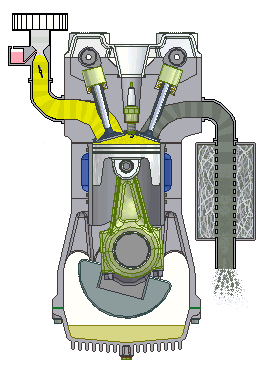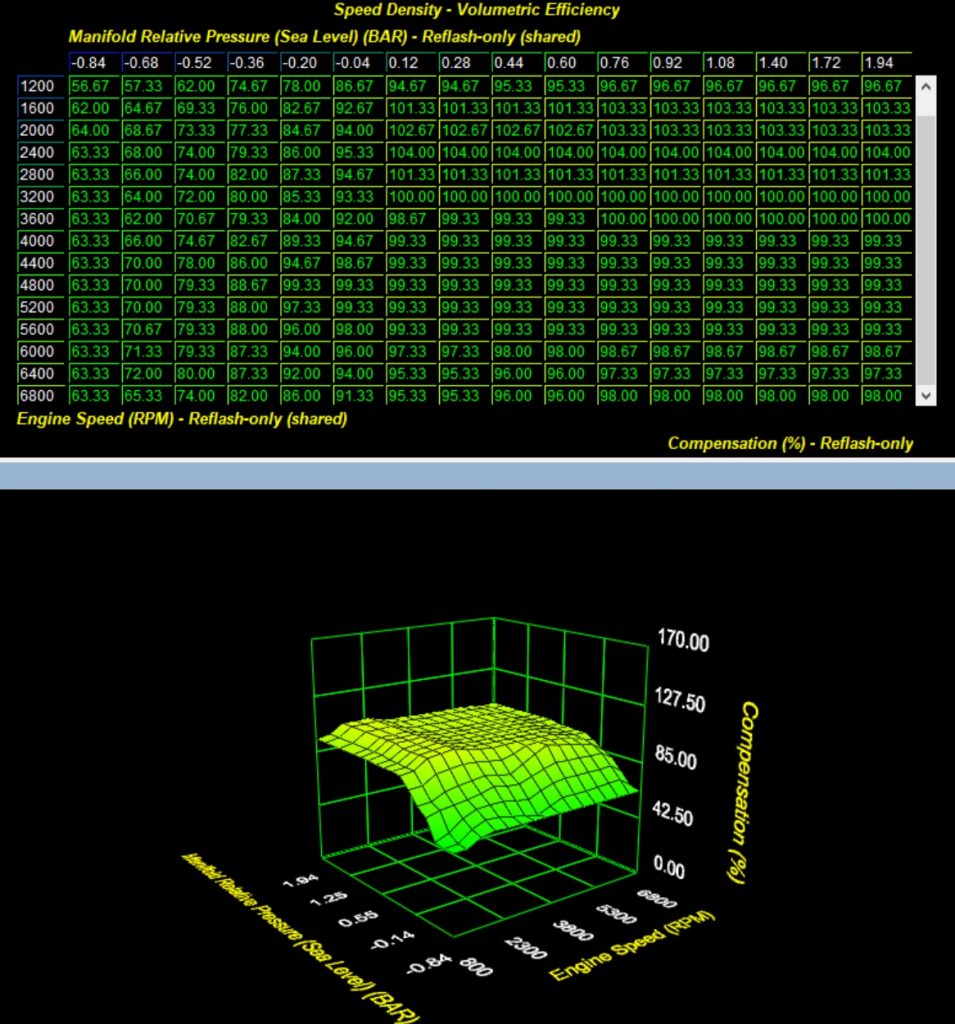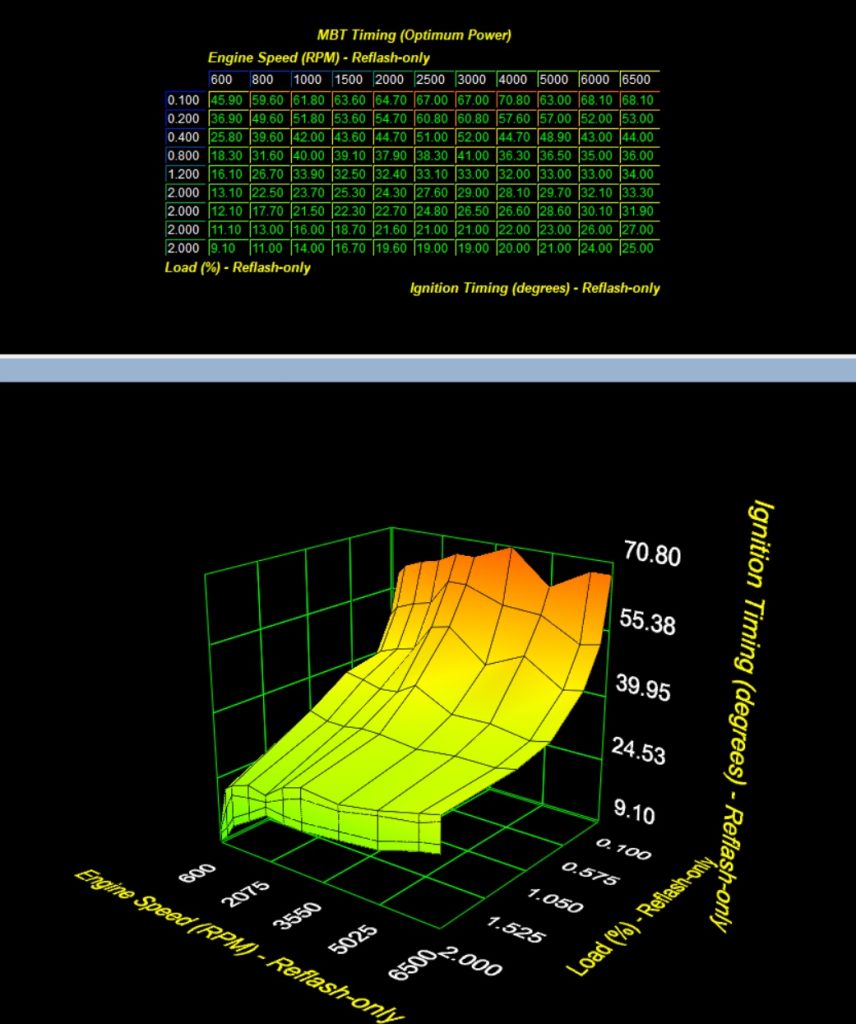How to Tune a Car
How to Tune a Car
Tuning can mean a lot of different things in the world of cars. Most would want to know how to tune a car to make changes to how your engine operates for some sort of benefit. Even with this more precise definition we still have a wide range of what tuning can be.
Upgrading hard parts? Tuning. Retarding timing so you can safely run 87 octane on your turbo car? Tuning. Leaning the engine out to the ragged edge at peak boost for maximum power? Tuning. The point is, tuning can accomplish a lot of different goals.
The first step for how to tune a car would be to first identify those goals. You can then start down the proper path to reach them. For the sake of simplicity, and since it tends to be the most common goal, most of what is mentioned here will focus on tuning the engine with a performance goal in mind.
Now that you’ve figured out what you want to do, how do you actually tune your engine? First, you’ll need a thorough understanding of the components that make up the engine and how they work together, how those components are controlled, and how to manage that control. Let’s have a basic overview on the operation of an internal combustion engine, ECU tuning, and the Accessport.
Combustion Cycle
Now, unless your daily driver is a riding lawn mower (no offense, Bobby Boucher), you’re likely working with a 4 stroke engine with at least 4 cylinders. The four strokes of an engine make up a full combustion cycle. Below is an illustration that covers each stroke and a brief overview of what’s happening along the way.

Intake
The intake stroke is where the piston lowers inside the cylinder. As it is lowering, the intake valve is simultaneously opening. The lowering of the piston (with the exhaust valve closed) creates a vacuum and sucks in the air through the intake valve. Prior to the intake valve is a fuel injector (for port injected cars at least. Some cars have direct injected engines with the injector in the combustion chamber). This fuel injector will vary the amount of fuel introduced based on the amount of air being fed into the cylinder.
Compression
During the compression stroke, both the intake and exhaust valves are closed (many engines have more than 2 but the point is all valves are closed or near closed during this stroke) and the crankshaft is moving upward compressing the air fuel mixture in the combustion chamber.
Power
Next up is the power or combustion stroke. When the piston reaches somewhere near the top, or top dead center (TDC), the spark plug ignites the compressed air fuel mix resulting in combustion. This forces the piston downward which forces the crankshaft to continue turning (in in turn, turns whatever it is connected to – like your transmission which is connected to your wheels).
Exhaust
That spent gas has to go somewhere. Enter – exhaust stroke. When the piston reaches somewhere near the bottom the exhaust valve opens. The intake valve stays closed and the piston goes back up. This forces the used mixture out of the exhaust valve and through the rest of the exhaust.
Not shown above is how these are all connected. Here is a gif to help visual the combustion cycle in action.

This also shows us how the crankshaft is connected to a timing belt or chain. This belt is connected to a cam gear which is connected to the camshaft(s). The camshaft has lobes which force valves open. These lobes are positioned on the camshaft at specific angles with a specific relationship to the position of the crankshaft. Note that the crank goes down and up twice for each time the valve opens (or each rotation of the camshaft). On any four stroke engine, the gear ratio between the camshaft and crankshaft will always be 2:1.
Our example engine above is a dual overhead cam (DOHC) inline four cylinder engine with four valves per cylinder. Some engines like the GM LS have only one camshaft and two valves per cylinder. Some have four or more cams with 5 or more valves per cylinder (there have been engines with more than 5 but that seems to be more trouble than it’s worth). There are also different layouts for an engine which position the cylinders not in a row but in a V shape, a flat or horizontally opposed layout, or even a W layout. While these different layouts or number of cams or valves can offer different opportunities or limitations, when it comes to tuning, they all require the same demands; fuel, air, and spark.
Now that you’ve got an understanding of the combustion cycle let’s get into the nitty gritty of what controls it; the ECU.
ECU Tuning
On modern, electronic fuel injected cars, there is an Engine Control Unit (ECU) which controls the engine. This ECU gathers data from various sensors around the engine. This sensor data is interpreted and then used to send signals to various outputs like fuel injectors and ignition coils. Based on the signal inputs, the ECU determines the amount of fuel to inject and when to ignite the spark plug.
There are also aftermarket ECUs or a “standalone” ECU which will completely eliminate and replace your factory ECU. The benefit here is infinite adjustability, control, and lots of room for custom features. If using a standalone ECU, you will need to configure all sensor data before you start tuning the engine. However, most goals can be achieved by using the factory ECU. The benefit with the stock ECU is that the architecture is already in place. You simply need the software to make the necessary tuning changes and the hardware to get those changes onto the ECU.
The ECU involves several different “tables”. Tables are comprised of different cells which contain values specific to certain inputs. These inputs are typically arranged with their minimum and maximum values along an X and Y axis. Changing these values is the root of ECU tuning for your engine.
Some ECUs have thousands of these tables. When tuning a car, it’s not uncommon to modify hundreds of these table to reach the desired outcome. Let’s go over some of the more important tables.
Fuel Mixture
No combustion engine can run without fuel and air. In order to tune your car, you’ll need a thorough understanding of their relationship and how your engine uses them. There are different strategies used to manage this mixture. Here, we’ll focus on a speed density tuning strategy which uses a Manifold Absolute Pressure sensor to measure incoming airflow. Vehicles that use a MAF sensor will be a little different but the overall concept is similar.
Below is one of the most important tables when it comes to tuning your car’s engine. This table will determine the amount of fuel injected based on a given airflow and RPM.

Volumetric Efficiency
The volumetric efficiency is the ratio between the actual volume of intake air drawn into the cylinder/engine and the theoretical volume of the engine/cylinder during the intake stroke. That is, the amount of volume it can actually draw in, and the total displacement of the engine (total volume of the full stroke between top dead center and bottom dead center). For example, let’s say we have a 4 liter engine. But, this engine only draws 3 liters of air from the intake manifold during a full combustion cycle for each cylinder. The volumetric efficiency of this engine would be 75% (3/4).
The percentage can change drastically at varying RPM and load levels. VE will also change with varying air density. Changes in environment like temperature and elevation can greatly affect volumetric efficiency. You can also improve VE by making it easier for air to flow.
Upgraded intakes, intake manifolds, larger throttle bodies, porting and polishing cylinder heads, headers, and other modifications, all have the goal to improve airflow. These are some of the best modifications you can make. These mods can not only make your car faster but can also make your car sound better. It is important to tune the fuel and ignition systems to account for these changes in VE. If adding forced induction to the mix (turbo/superchager) VE can increase to over 100% allowing the potential for massive power gains. Our example table above is from a turbocharged engine and you can see areas of the table where VE exceeds 100.
In some ECU strategies, the VE map will work in conjunction with a Lambda Target (and several other) Table. Lambda is the specific air fuel ratio. There are oxygen (o2) sensors in the exhaust system after the combustion chamber. These sensors can measure the remaining oxygen in the system after combustion. The ECU can compare this measurement to the lambda target and inject more or less fuel based on the o2 sensor reading.
Now that airflow and fuel has been discussed, let’s move on to the ignition system.
Spark/Timing
Similar to the VE table mentioned above, certain ECUs also use a table which tells the spark plugs when to fire based on a certain amount of airflow and RPM. Our example table below will express table values in degrees before top dead center (TDC).

Ignition Map
This is an example of one of several timing tables. This represents the minimum timing for best torque of the engine based upon extensive modeling and testing on an engine dyno. These values are achieved on high octane fuel and should not be used as a reference to adjust timing on standard pump gas. During low load conditions these tables will be averaged and used to optimize combustion.
Degrees before top dead center? You may be surprised to learn that the spark plug fires before the engine reaches top dead center. Considering our animation above, it is counter intuitive for the plug to fire for the power stroke prior to the compression stroke ends. Wouldn’t the plug igniting creating a downward force while the piston is still going upward cause an issue?
If too early, it certainly can. However, since the engine is spinning so fast, we need to ignite the mixture quickly. In order to achieve this, the pressure inside the cylinder must be high. We’re able to cause a sharp increase in cylinder pressure by igniting the mixture prior to TDC. The greater the pressure ignited, the more power produced. If too early, this can cause severe engine knock and catastrophic failure. This is why we want the minimum best timing. That is, the minimum amount of degrees before top dead center. Using a dynometer, tuners can adjust timing advance and measure torque output. They will continue to advance ignition timing until it begins to diminish from its peak. Once that happens they have found the optimal timing or minimum best torque timing.
In Depth Tuning
This was a very basic overview for these two important concepts. As mentioned previously, while the general concept may be similar, the exact strategy, and therefore way to tune that strategy, can be different. If you’ve got the basic understanding from above and want to learn more, check out our tuning guides for each specific platform.
- Subaru Tuning Guide
- BMW Tuning Guide
- Nissan Tuning Guide
- Ford Tuning Guide
- Mazdaspeed Tuning Guide
- Mitsubishi Tuning Guide
- Porsche Tuning Guide
- Volkswagen Tuning Guide
These tuning guides are specific to the Accesstuner Software for each COBB supported platform. For a more in depth tuning instructional than the tuning guide, check out the Accesstuner EFI University course for the Accesstuner platform you’d like to tune. Click “Get Accesstuner” button on your platform’s page for more details.
With the working knowledge of how to tune the car, how do you actually make those changes to the ECU? You will need software to make these changes and hardware to get those changes onto the ECU. This is most easily done with the Accessport and Accesstuner Software. If you don’t feel confident enough in your tuning prowess to make these changes yourself, you can still tune the car with only the Accessport! The Accessport will come with maps that already have the appropriate changes to account for specific modifications that will safely increase power. Now that we have the tune, let’s go over the process of how to tune the car’s ECU.
Accessport
The Accessport is the world’s best selling, most flexible, and easiest to use ECU upgrade solution. You simply plug the Accessport cable into your OBDII port, select the map you want to flash, and let the Accessport go to work! In a few minutes, your car will be tuned. It really is that easy. Check out the video below for more details on this process.
Off The Shelf Maps
COBB Tuning provides several off the shelf maps for each vehicle supported by the Accessport. These maps are designed to offer performance gains for completely stock vehicles along with those that have specific bolt-on modifications. There are also valet, economy, or anti-theft maps for most platforms. To see what all is available for your vehicle, along with the power gains and modification requirements for each map, head over to our calibrations section and select your vehicle.
The topic of “How to Tune a Car” can fill several books. You may not be a Protuner just yet but hopefully you now have a better understanding of how to tune your engine! If you’re not able to tune the car yourself just yet, you can get the benefits of tuning with an Accessport and off the shelf maps. You can also check out our knowledge base at www.cobbtuning.com/support for more details on all things COBB! There is also an entire video series called COBB U that will help any new auto enthusiast broaden their vehicular knowledge! We’re also here for troubleshooting tips, upgrade path advice, and can help with any other questions at [email protected] or give us a call at 866-922-3059

how much HP is gained using this and can you send me a dyno text on this?
2017 Subaru WRX MT USDM Stage 1+BigSF Map, Performance, Stock Throttle, Normal Wastegate, 93 OCT/98 RON, v3.02
Hi Steve,
It’s 26hp and 32tq to the wheels over stock.
Here is a link to the dyno database that has all of our OTS maps dyno charted: https://www.cobbtuning.com/dyno-database/
Here is a direct link to the chart you’re looking for (the car will make the same amount of power with or without the intake on Stage 1): https://dyno.cobbtuning.com/dyno/graph.php?g1=0,1,3,15,0,1Jz,47,1Me,u5ya
Kyle@COBB
I recently obtained a 2007 Mazdaspeed 3. When I obtained it, I was informed that it had an “eco tune”, and as time progressed it has been giving me problems with coils, crankshaft sensors, etc.
Ultimately, how do I determine whether it does have such tune, and whats the best way to eliminate it if it does.
I’m still new to the race world and would appreciate any help or insight on the matter.
HI Eric,
I’m sorry to hear about the issues. There’s not really a way to see if the car has a tune. You could take it to the dealer and have them reflash the car to stock. I’m not sure what they might charge for the process though. Another way to return the car to stock would be with the Accessport. You could install it, and uninstall it, and it would put the stock data on the car. Depending on what modifications are done though, this could potentially make matters worse. I’d only recommend running the stock tune if the car is actually stock.
Kyle@COBB
You made a good point that a good fuel mix should also be involved when it comes to performance tuning. I’d like to get that kind of maintenance for my car soon because I feel like my car has been a bit slow recently. Perhaps I should check how its acceleration has been going lately.
I would like to have my car tuned since it’s not performing well lately. Thank you for sharing here as well that it would be best to have its engine thoroughly checked too. I also agree with you that it’s smarter to have its transmission checked.
I would like to self tune my wrx. I know that there is a lot of risk but i just need some guiding and i think i should be okay to get a map going.
The step-by-step breakdown of the tuning process, along with the accompanying videos, makes it easy to understand even for beginners. I appreciate how it covers the basics while also delving into more advanced tuning concepts, providing something for tuners of all levels. The inclusion of real-world examples and practical tips is a valuable addition, helping enthusiasts apply the knowledge gained effectively. This guide is a great starting point for anyone looking to embark on their tuning journey.
Wow, this is an incredibly detailed guide on the art of tuning modern vehicles! I had no idea there were so many factors to consider beyond just playing with the air/fuel ratios. Balancing all the different parameters like cam timing, boost levels, and ignition timing seems like an intricate dance. I can see why having the right tuning software and hardware is crucial. But I’m curious, for those of us just dipping our toes into tuning, what are the most important basics to get down first before moving onto the advanced stuff?